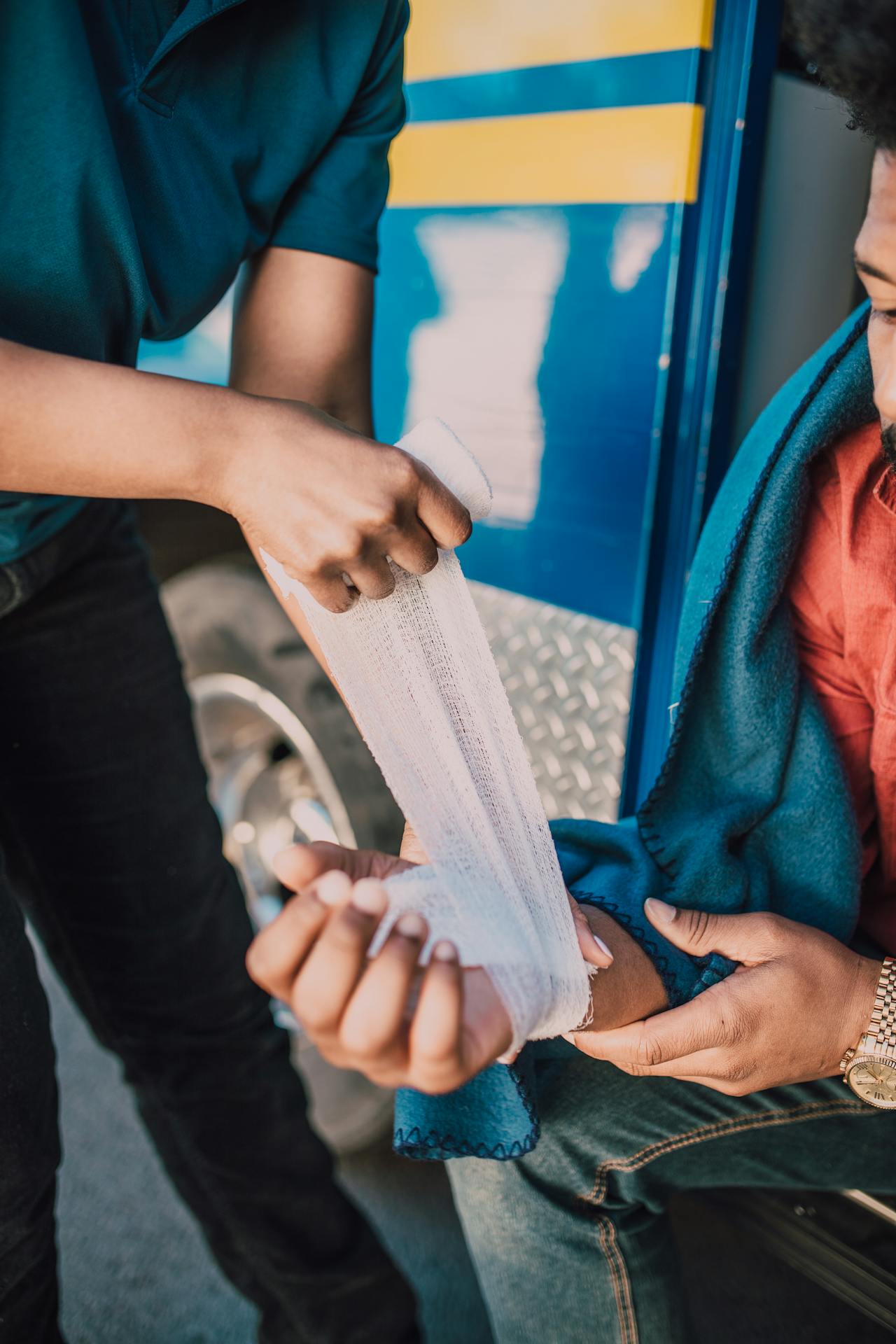Workplace injuries can occur despite the best safety measures in place. When they do, knowing how to respond promptly and effectively can make a significant difference in the injured worker’s recovery and overall outcome. This article outlines steps to take immediately after an injury, how to provide ongoing support, and ways to prevent future incidents.
Immediate Response to an Injury
1. Ensure Safety First
The first step in helping an injured worker is to ensure that the area is safe. This means removing any immediate hazards that could cause further injury to the worker or others. For example, if the injury involved machinery, turn off and secure the equipment.
2. Assess the Situation
Quickly assess the severity of the injury. Determine if it is life-threatening or requires immediate medical attention. This will help you decide the next course of action, whether it is calling emergency services or administering first aid.
3. Call for Medical Assistance
For severe injuries, call 911 or your local emergency number immediately. Provide clear information about the location, nature of the injury, and any immediate hazards. For less severe injuries, you may need to contact workplace medical personnel or arrange transportation to a healthcare facility.

4. Administer First Aid
If you are trained in first aid, provide care within the scope of your training. This could include:
- Stopping Bleeding: Apply pressure to wounds with a clean cloth.
- Immobilizing: Avoid moving the injured worker if you suspect a spinal injury.
- Performing CPR: If the worker is unresponsive and not breathing, perform CPR if you are certified.
Always ensure you are protecting yourself by using gloves and other protective equipment when administering first aid.
5. Stay Calm and Reassuring
Your demeanor can greatly impact the injured worker’s emotional state. Stay calm, speak reassuringly, and let them know help is on the way. This can reduce their anxiety and help them remain still and safe.
Documentation and Reporting
1. Document the Incident
Accurate documentation is crucial. Record details of the incident as soon as possible, including:
- Time and Date: When the injury occurred.
- Location: Where the incident took place.
- Witnesses: Names and contact information of anyone who saw the incident.
- Description: A detailed account of what happened and the nature of the injury.
This documentation is vital for workplace records, insurance claims, and any potential legal actions.
2. Report the Incident
Follow your workplace’s protocol for reporting injuries. This usually involves notifying a supervisor or manager and filling out an incident report. Ensure the injured worker’s immediate family is informed if the injury is severe.
Providing Ongoing Support
1. Facilitate Medical Treatment
Ensure the injured worker receives appropriate medical care. This may include:
- Transport: Arrange for safe transportation to a healthcare facility.
- Follow-Up: Help schedule follow-up appointments and treatments.
Stay in contact with the medical professionals to understand the worker’s condition and recovery timeline.
2. Communicate Regularly
Keep in touch with the injured worker during their recovery. Regular communication shows that you care about their well-being and helps them feel connected to the workplace. Updates on their condition and progress can also help in planning their return to work.
3. Provide Emotional Support
Injuries can be emotionally challenging. Offer emotional support by:
- Listening: Be available to listen to their concerns and frustrations.
- Encouragement: Offer words of encouragement and positive reinforcement.
Consider suggesting professional counseling if the worker seems to struggle with anxiety, depression, or PTSD related to the injury.
Planning for Return to Work
1. Coordinate with Medical Professionals
Work with the injured worker’s healthcare providers to understand their physical limitations and any accommodations they may need. This can help ensure a safe and smooth transition back to work.
2. Modify Duties as Needed
Adjust the worker’s duties to match their current capabilities. This might include:
- Light Duties: Assigning tasks that are less physically demanding.
- Flexible Hours: Allowing part-time work or flexible hours during the initial return period.
Ensure these modifications are documented and reviewed regularly to adjust as the worker’s condition improves.
3. Educate and Train Staff
Educate staff about the injured worker’s condition and any changes in procedures to accommodate their return. Training should include:
- Safety Protocols: Reinforcing existing safety protocols and introducing new ones if necessary.
- Support Strategies: Teaching coworkers how to support the injured worker effectively.
Preventing Future Injuries
1. Conduct a Thorough Investigation
Analyze the incident to determine the root cause of the injury. This involves:
- Reviewing Procedures: Examining whether current procedures were followed.
- Identifying Hazards: Identifying any hazards that contributed to the incident.
- Evaluating Equipment: Checking if equipment malfunctioned or was used incorrectly.
2. Implement Corrective Actions
Based on the investigation, implement measures to prevent similar incidents. This could include:
- Updating Procedures: Revising safety procedures and protocols.
- Training Programs: Conducting regular safety training and drills.
- Equipment Maintenance: Ensuring all equipment is properly maintained and safe to use.
3. Promote a Safety Culture
Foster a workplace culture that prioritizes safety. Encourage employees to:
- Report Hazards: Feel comfortable reporting potential hazards without fear of reprisal.
- Follow Procedures: Adhere to safety procedures consistently.
- Participate in Training: Engage in ongoing safety training and education.
Legal and Insurance Considerations
1. Understand Workers’ Compensation
Workers’ compensation is a critical aspect of handling workplace injuries. Ensure you:
- File Claims Promptly: Help the injured worker file a workers’ compensation claim with the help of a workers’ compensation lawyer serving Washington D.C. as soon as possible.
- Understand Coverage: Be aware of what medical treatments and lost wages are covered under workers’ compensation.
2. Consult Legal Advisors
In cases of severe injury or potential litigation, consult with legal advisors to:
- Protect Rights: Ensure the injured worker’s and your company’s rights are protected.
- Navigate Legal Processes: Get guidance on navigating any legal proceedings that may arise.
Helping An Injured Work Can Benefit You
Helping an injured worker on the job involves immediate action, thorough documentation, ongoing support, and preventive measures. By ensuring prompt medical attention, providing emotional and practical support during recovery, and taking steps to prevent future incidents, you can create a safer and more supportive workplace environment. Always remember that the well-being of your employees is paramount, and your actions can significantly impact their recovery and return to work. Prioritizing safety and fostering a culture of care and responsiveness can help mitigate the effects of workplace injuries and contribute to a healthier, more productive work environment.


